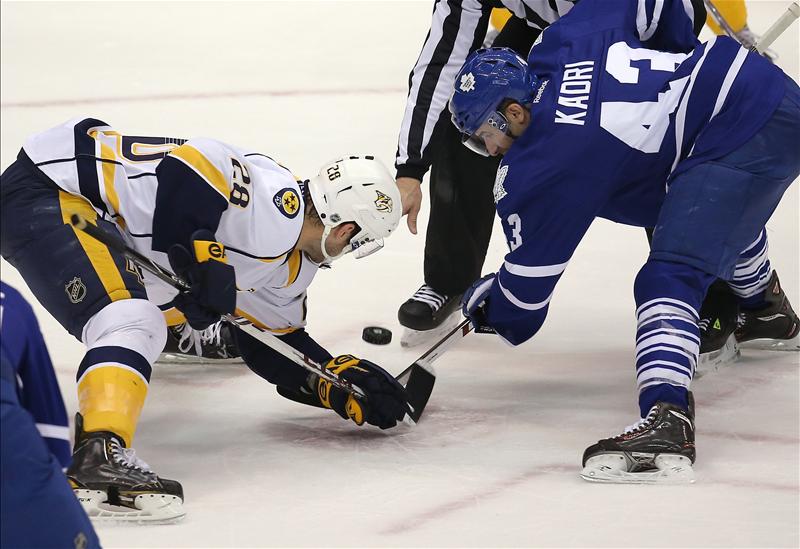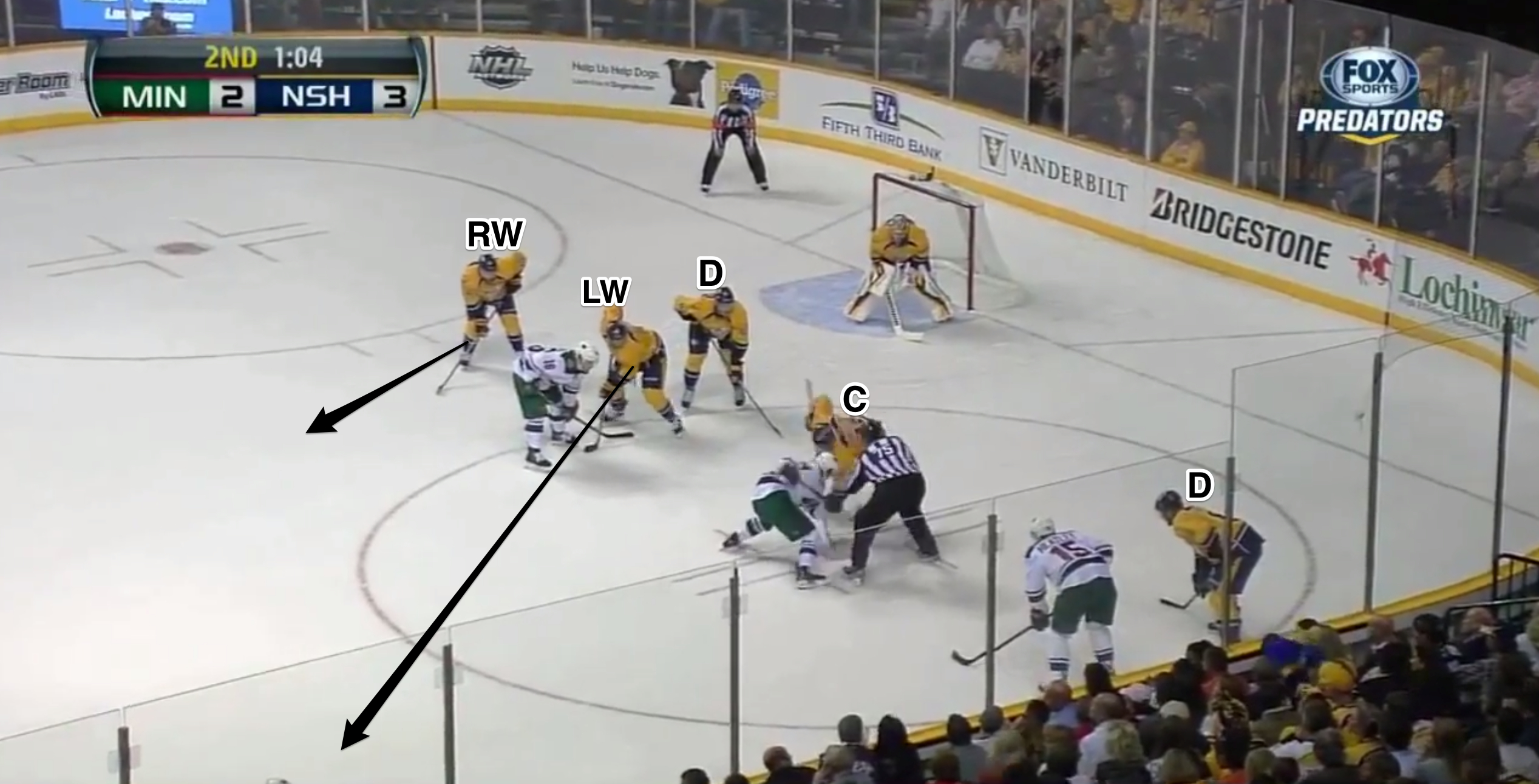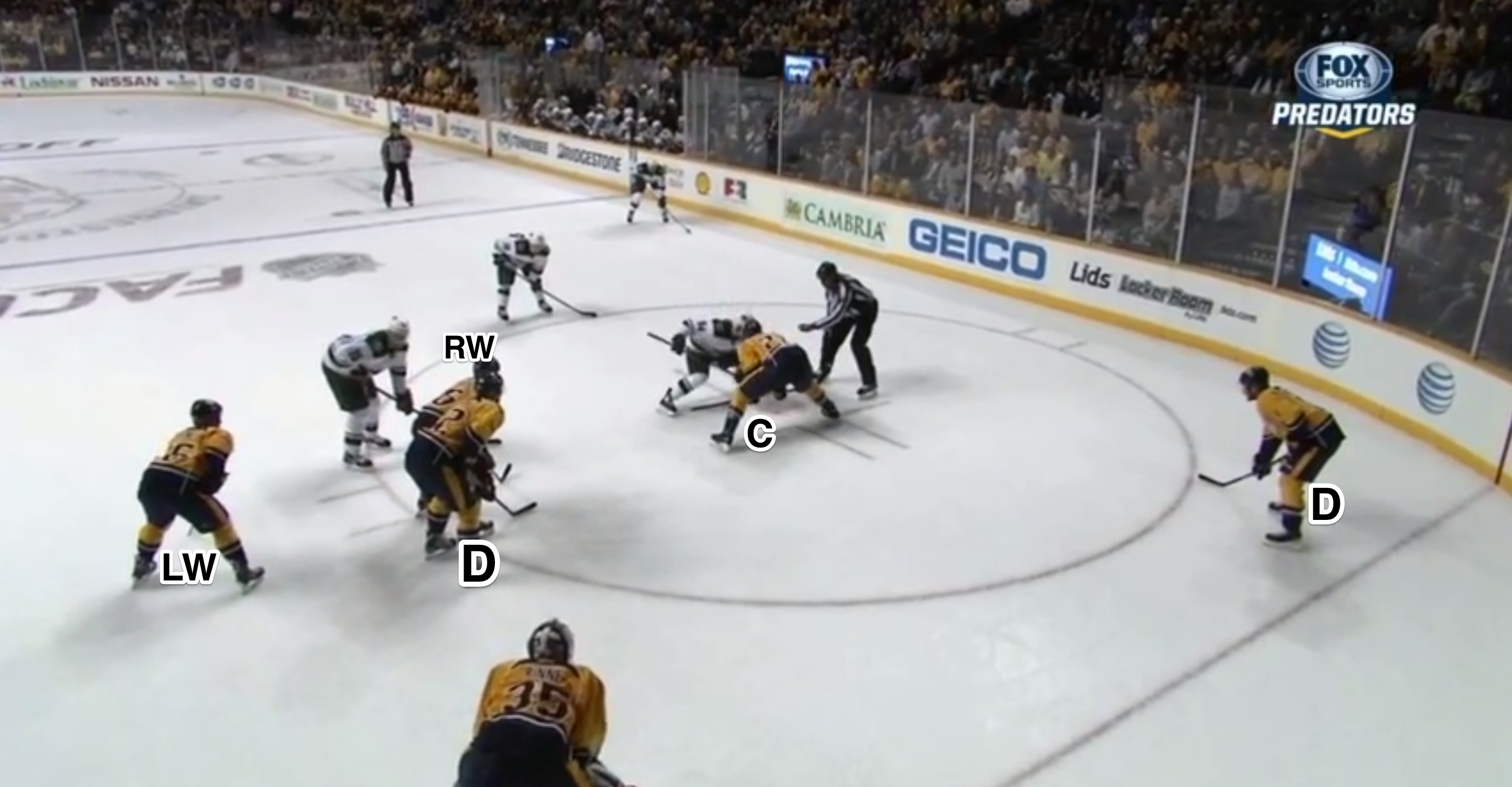Unique Team Traits: The Predators were better than your team at faceoffs, not so much after
theScore’s multi-part team previews include a look at something that separates each team from the pack. From specific breakouts to powerplay formations and beyond, Justin Bourne and Thomas Drance hope to highlight something you haven’t noticed in the past.
What we noticed
The Nashville Predators are hockey’s best faceoff team, particularly in the defensive zone, but don’t do much with those possessions
Last season’s Nashville Predators were absolutely dynamite in the faceoff circle. Their crew of centers was composed of veteran players with sandpaper, with guys like Paul Gaustad, Matt Cullen, Mike Fisher, and David Legwand leading the way.
That may not be the case this season, with Fisher out with a ruptured Achilles and new centers Mike Ribeiro (43.4 percent last year) and Olli Jokinen (46 percent), but Gaustad and Cullen remain to help keep the Predators above water.
But last year … oh last year. They were something. Hockey has become more and more about dominating possession, and the Predators took the puck off faceoffs the bulk of the time. What they did with it from there may not have been great - okay, it wasn’t great, as you’ll see - but at least they got out of the gates well.
The numbers

Nashville was the best faceoff team in hockey, winning 53.1 percent of their total faceoffs, which put them ahead of the San Jose Sharks and Los Angeles Kings for top spot.
They were particularly dominant in the D-zone, winning draws at a league-best rate of nearly 56 percent, highlighted by Paul Gaustad’s 59.9 percent (10th best in the NHL) and Matt Cullen’s 61.7 percent (fourth best). The top 20 in the D-zone boasts names like perennial Selke competitors Anze Kopitar, Patrice Bergeron, and Jonathan Toews, so y’know, it’s pretty decent company.
Following up Gaustad and Cullen were Nick Spaling (52.7 percent), Fisher (52 percent) and Legwand (51.1 percent).
Faceoff technique

Here's a great two minutes clip where Paul Gaustad explains how he goes about trying to win a face-off. The important points:
First, Nashville apparently “does a good job pre-scouting opponents to figure out their tendencies.” Having an idea what your opponent wants to do - pull it to his backhand, push it forward, tie up the draw and rely on wingers, etc. - can go a long way towards counteracting their plan.
* If you're not in the NHL and don't have a scouting department, his notes:
- Get everyone in position before you line up
- Watch how your opponent holds his stick, watch his eyes, watch how he talks to his teammates to pick up clues
- Get low for leverage
- Watch the linesman's hand - when he moves, you move
- Make sure you're in motion before the puck is down
- Use your strengths - if that's power, use your hips and arms
- Meet the puck when it meets the ice
Okay, so, Nashville, you've won the faceoff. Great work. Now, what are your set plays to get this baby moving in the right direction and into the other end of the ice?
The breakdown

Oh woof, that’s it, eh guys? You just choose to play plink-a-plunk off the glass? Well that’s disappointing.
Nashville does nothing special in their faceoff alignment. They line up the strong side winger on the inside and run him out at the boards-side defenseman, and the weak side winger drifts out to the D-man in the middle. The D-men are in the standard spots, reading based on a won or lost draw.

The LW in the picture above will look to see if he can help win the draw on the way out to his D-man (the opposing winger will likely try to pick him a bit on his way to “help win the faceoff” for his team).
If the opposition lines up a forward as a shooter, well, the boards-side D-man can step back to get a head start on the breakout, and he can still get to the wall to win the puck if the draw goes there. The inside winger will now get in that shooter’s lane on a lost draw, and the D-man will pick him up after that.

Pretty simple.
Teams tend to have some set plays off pucks won clean off either formation. Some teams will drop a winger back on the far side below the goal line (while the middle D picks the forechecker), and have the other D pass him the puck. Some run a reverse to the center, with the D-man pulling the first forechecker to him. There’s a ton of options.
Nashville, however, basically picks a side to go up, bangs it off the glass, prays that the puck gets out, and that the bounces leave the puck in their forwards’ hands. We watched a good amount of D-zone video without seeing a variation.
I get the idea: if the Preds don’t pick up the puck after the chip, at least it’s out, and since their team knows where the puck is going, they have a little advantage in re-acquiring it. But, yeah, still pretty unimpressive.
Puck back, pick a side to bang it off, bring support.

Here’s an example of pull it back. Basically they bring the puck around the net (this time it requires a D-to-D bump), and it’s glass and out … or not.
(Courtesy: CSN)
They even had Shea Weber doing it.
(Courtesy: Fox Sports)
Whoops.
And when they got frisky, they’d pound it up the strong side.
(Courtesy: Fox Sports)
It’s undeniable the Predators were dominant in the faceoff circle, particularly in the D-zone. They used big, strong dudes with real will to win pucks.
They weren’t great after that, but you’d rather have the puck bouncing up around the blue line than laying flat on the opposing D-man’s stick after a lost faceoff.